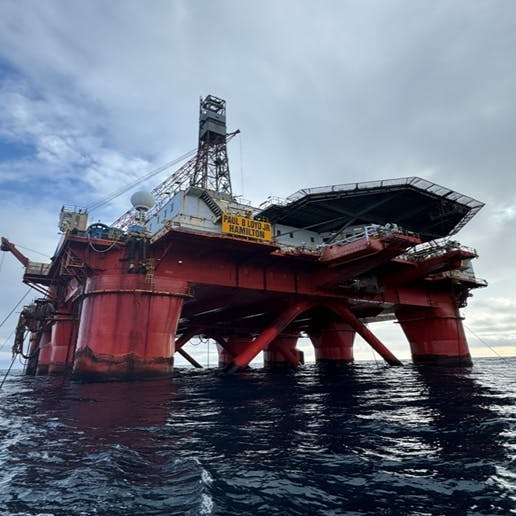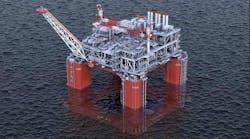Full wireless coverage enables offshore digital transformation
By Øyvind Skjervik, Tampnet
With the growing adoption of sensors and Internet of Things devices on platforms, oil and gas companies can monitor and manage operations remotely, which reduces costs and enhances safety.
Digital tools allow the base crew to call on experts from onshore or gain better situational awareness when unexpected events occur. In addition, having fewer people offshore leads to increased safety and reduced risk of injury.
Realizing these benefits requires real-time processing and transfer of large data volumes with minimal latency and uncompromised quality.
Fiber cables provide the foundation for high-speed and large bandwidth for most offshore fields, which combined with private 4G/5G networks and satellites opens up new possibilities for connecting rigs, FPSOs and offshore vessels.
Case study
Tampnet was contacted by Dolphin Drilling in 2023 because it faced significant connectivity challenges in its offshore operations. Traditional VSAT-based communication systems, which relied on satellites with high latency, created delays that hindered the adoption of digitalization and automation technologies.
The Paul B. Loyd Jr. semisubmersible drilling rig was the first floating rig in the North Sea to implement the Connected Rig solution with a mix of advanced technologies, including a high-capacity, low-latency offshore 4G/LTE network connected to nearby installations with fiber-backhaul and LEO satellite services via Starlink and OneWeb for global coverage.
Coverage throughout the rig
Traffic orchestration was managed through Versa SD-WAN technology, ensuring critical operational data was prioritized and other traffic needs balanced. This technology provided high-bandwidth connectivity, network redundancy and onboard services like Wi-Fi and VOIP (voice over internet protocol), enabling efficient communication between offshore crews and onshore teams.
Dolphin Drilling is now considering implementing Tampnet’s advanced connectivity solutions across its fleet, integrating a fully managed hybrid private network with edge computing capabilities and next-generation mobile technology. Utilizing two outdoor antennas and existing distributed antenna systems, this technology is designed to achieve seamless, rig-wide coverage. The network architecture supports hybrid private/public traffic segregation, enabling autonomous operation independent of shore-based systems. This upgrade enhances crew connectivity, ensures uninterrupted access to critical systems and data from any location, and enables real-time personnel tracking for swift responses to safety incidents.
Mission critical solutions
Tampnet’s MCX (Mission Critical Communication) technology enables advanced group communication over a private mobile network. By consolidating services onto a single smartphone platform, MCX reduces infrastructure needs and simplifies operations. Features such as push-to-talk, push-to-video, messaging, presence and location services enhance situational awareness, boosting both efficiency and safety. MCX gradually replaces traditional radios with more versatile, digital tools. Initial deployments allow crews to use MCX alongside existing systems, easing the transition. Over time, the proven reliability and functionality of MCX support a full shift to this platform. With fewer devices to manage and a scalable network backbone, MCX simplifies training, lowers maintenance and ensures robust communication offshore.
By having a proactive approach to enhancing connectivity and operational efficiency, Dolphin Drilling ensures that its rigs will continue to meet and exceed the evolving demands of the offshore sector, supporting both its clients' ambitions and its commitment to crew welfare and safety.
This article was last updated May 21, 2025.
Want more content like this?
About the Author

Øyvind Skjervik
Øyvind Skjervik is the chief architect at Tampnet. He has more than 30 years of experience within the telecom industry ranging from startups to large service providers, specializing in implementation, design, integration, and management of voice, video and data grade communications networks.
He started his career at Telenor as senior telecom and network engineer. Among others, he also worked with Kværner Engineering, Song Networks and Altibox before joining Tampnet in 2015.







